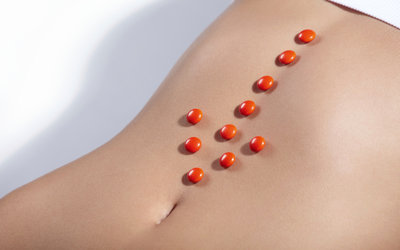While everyone has some sort of sexual health education under their belt, it can be hard to remember all the details once you’re out of high school. Sure, you know the difference between a pad and a tampon, but do you recall what a period really is? When you’re lying on the sofa with your wellness in such a mess you need hot water bottles and a lifetime supply of chocolate to get you through it, it’s easy to forget why you actually have periods in the first place. So let’s see exactly what’s going on inside your body, and why it needs to happen.
Your period – otherwise known as menstruation – is the time every month when your uterus sheds blood and tissue through the opening of your vagina. Not only is menstruation is an important part of the reproductive process, but it is indicative of a good overall wellbeing, signalling you’re maturing and that you’re healthy. You start your cycle once you hit puberty, thanks to your hormones sending all kinds of signals to areas inside your body to start growing and maturing. The main players here are oestrogen and progesterone, which have a major influence on your reproductive system and your menstrual cycle. Your cycle is made up of three distinct phases: the follicular phase, the luteal phase and your menstrual period. Let’s take a look at each one in a bit more detail:
1. Follicular Phase: This phase occurs just before your period, and is the time in which your hormones will signal your ovaries to get ready to release an egg. The lining of your uterus (endometrium) will also start to thicken at this time. The transition between this phase and the next luteal phase is known as ovulation, and this is when you are at your most fertile. Pregnancy begins if the ovaries release an egg which is then fertilised by a sperm and attaches itself to the lining of your uterus.
2. Luteal or Premenstrual Phase: During this phase, your ovary releases an egg and it travels down the fallopian tube to your uterus. From woman to woman, the time it takes for your body to do this can vary. For this reason, you may have a longer or shorter cycle than other women. The luteal phase is also the time in which many women go through Premenstrual Syndrome or PMS (read: that bit where you cry and chuck plates at the wall). PMS can cause you to experience bloating, aching, breast soreness, cramps in your pelvis or back, less energy, headaches, diarrhoea, constipation, nausea, dizziness and/or fainting – lovely.
3. Menstrual Period: If, during the luteal phase, the egg is not fertilised or doesn’t implant in your uterus, your body realises it doesn’t need this thick uteri lining and so it starts to break down. This causes bleeding and marks the beginning of your “period” and Day One of your cycle. This bleeding may last anywhere from three to seven days, but most of the blood loss with occur in the first three days.
This entire cycle will then repeat every 28 days or so, but the length of a cycle is different for every woman. That said, younger women commonly experience irregular cycles for the first couple of years after they get their period, while older women tend to have more regular periods as your body’s hormones find a nice balance. If you have trouble understanding your cycle, try to keep track of when your period stops and starts on a calendar, so you can better prepare for the next one.
